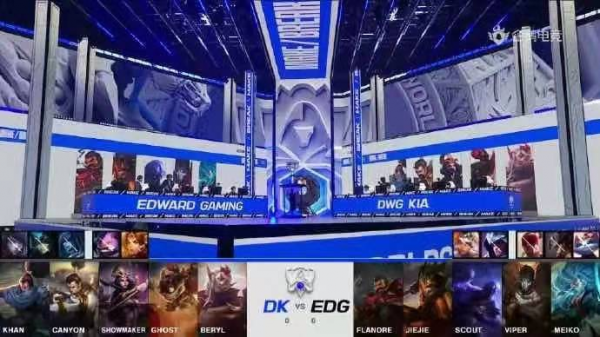发布时间: 2022/01/14 关注度: 301
1. Affected by the long-term impact of the COVID-19 epidemic, the hybrid working model has emerged and gradually mainstreamed.
Based on Sigmaintell's survey of users in six major countries in the world, including developed and developing countries, we found that the hybrid working model has emerged and gradually become mainstream. The connotation of this hybrid working model refers to at-home and semiat-home mixed office status.
55% of the respondents indicated that they are still working from at-home and semi-at-home in the post-pandemic period, which means that more than half of the global user base continues to the hybrid working model. What does that mean for consumer electronics and the industry? It means that more than half of the working hours are in the state of remote work. Because the needs of remote work brought about by the hybrid working model, including the need for remote communication and remote collaboration, have great potential for product performance and product specification upgrades. This is an aspect of product upgrades seen based on the mainstreaming of the hybrid working model.
 图片来自:Shutterstock
图片来自:Shutterstock
2. In the post-epidemic era, the gaming crowd has gradually become mainstream.
Among the gamers surveyed by Sigmaintell's user survey, nearly 60% of the global gaming people surveyed are moderate to heavy gamers. At present, people have a lot of entertainment in their spare time, and gaming can occupy the user's time for more than 2 hours. Such a high proportion shows its importance. The importance of gaming in the entertainment of daily life for people of all ages and occupations has become higher than before the epidemic. Therefore, as they attach more importance to and stick to gaming entertainment activities, their demands for product performance also increase. There are bound to be more opportunities for upgrades.

3. Multi-screen integration and collaboration become a major trend.
As early as before the epidemic, the industry discussed the Internet of Things and multi-category integration. In fact, we did not see the real scene landing. However, according to the survey data of Sigmaintell, it can be seen that under the catalysis of the epidemic, the scenes of multi-screen integration in daily life have increased significantly. First of all, handheld gaming devices are heavily connected to TVs and monitors. The highest proportion of handheld gaming devices is as high as 30%, and the proportion of handheld gaming devices connected to monitors has also reached more than 20%. The two categories of TVs and monitors are mutually exclusive competitions in the game scenarios played by users. Secondly, with the rise of the growing hybrid working model, the multi-screen office is required, such as a remote office with a monitor, local productivity activities with the notebook, etc. Thirdly, as the most mobile electronic product, the mobile phone has the most diversified interconnectivity and has an even proportion of connections with all categories. In general, whether it is for office activities or entertainment activities, the interconnection between categories is very diversified, and there will be an imbalance between categories.
4. A cross-category competition situation is taking shape and controlling the direction of product upgrades.
There is a competitive relationship between various categories of multi-screen interconnection in different scenarios. In other words, as user usage scenarios change, the boundaries of various categories are being broken. Based on this, we believe that the industry chain, especially upstream manufacturers, can no longer look at the product direction conventionally when developing products, but should see how the products have more experience and added value compared with other categories in the specific usage scenarios of users. Therefore, in the design of products, the thinking of cross-border competition should be integrated, which will be crucial to the competitiveness of products in the future.
5. It is expected that the growth of the new energy vehicle market in 2022 will consume the 8-inch wafer capacity of 250K per month.
Vehicles have attracted much attention. On the one hand, due to the explosive growth of the new energy vehicle industry, the shipment of new energy vehicles in China has more than doubled in the first three quarters of last year, and it has also increased significantly in Europe. Sigmaintell's global survey found that Chinese consumers play the role of pioneers in the global market for new energy vehicles and smart vehicles.
The explosive growth of the new energy vehicle industry has significantly driven the capacity consumption of display and semiconductor ICs. According to the forecast of Sigmaintell, the global shipments of new energy vehicles are expected to increase by 3% in 2022 compared with 2021, and new energy vehicles are equipped with more and more semiconductors. In 2022, a new energy vehicle will be equipped with 1,500 chips as standard, which is about the 8-inch Wafer capacity. Based on this conversion, the wafer demand brought by the increase in new energy vehicles in 2022 will be as high as about 250K per month. From the perspective of display panel consumption, new energy vehicles consume an average of 2.5 displays per unit, which will also bring huge demand for vihicle displays.

图片来自:ROADSHOW
6. Semiconductor supply and demand will gradually ease in the second half of 2022, but structural supply and demand imbalances will still exist. The supply and demand relationship of display panels is looser than that in 2021.
Regarding the supply and demand relationship of semiconductor ICs, it is necessary to deeply explore how the current supply and demand imbalance occurs. The reasons behind the shortage of supply and demand imbalance are complex.
Based on the analysis of changes in the inventory of end products such as TV and mobile phones, the inventory of panel factories, and the inventory of global independent foundries, we focus on comparing the laws of the three horizontal trends. We found that there is a cycle lag in consumer electronics brand inventory feedback to fab inventory changes.
Sigmaintell believes that fab inventory changes lag the consumer electronics end market inventory changes by about two quarters. Why can panel makers quickly respond to changes in set inventory while fabs cannot? According to Sigmaintell's analysis, there are the following reasons.
First, the panel production cycle is shorter than the wafer fabrication cycle. Secondly, panel and wafer manufacturing are different in the division of labor in the global supply chain. Most of the division of labor in panels is concentrated in Asia, especially around mainland China, covering panel manufacturing, module manufacturing, and machine manufacturing. The wafer supply chain is more fragmented. Wafer manufacturing is mostly distributed in Taiwan, South Korea, packaging and testing in Southeast Asia, and finally back to mainland China for assembly. Wafer manufacturing has a long supply chain and a more decentralized global division of labor, which is more susceptible to the fluctuation of the epidemic, so the change cycle of responding to set inventory will also be longer.
Based on the above inventory index deduction and prediction logic, Sigmaintell believes that the current inventory of mature processes and wafer inventory are below healthy levels. With the inventory of set brands still running at a high level, the inventory of the fab will start to rise in 22Q1 and will reach a high level in 22Q3, that is, the inventory of the fab will be at a healthy high level in the second half of 2022. The high level of inventory is a weather vane for the change of supply and demand relationship, which means that the supply and demand relationship will usher in a significant relief, which will be reflected in the downward price.
Of course, under the overall downward trend of major semiconductor device prices, we believe that structural risks will still exist. Due to the complexity of the semiconductor process, the same 8-inch wafer has different conditions for different products. Especially in some process stages, the concentration of suppliers is relatively high, the speed of production expansion is different, and structural risks still exist. For example, we believe that Chipset 4G and 5G are expected to decline in advance from 22Q2, while OLED Driver ICs and batteries, which continue to be affected by new energy vehicles, will continue to see upward price trends.
In terms of panels, TV inventory is the first to reflect changes in end demand. It will start to decline in 21Q3. It is expected that the downward cycle will stabilize in 22Q2. Monitor and Notebook are relatively slow for one to two quarters, so the first half of 2022 will be in an overall decline in the cycle. Overall, the supply-demand relationship for panels will be looser in 2022 than in 2021.
7. The global semiconductor supply chain will face deep restructuring and regional technological differentiation.
In 2022, the global supply chain will face restructuring. So, what changes will the refactoring bring to the entire supply chain, and what impact will it have? First of all, from the perspective of the global distribution of independent wafer foundry customers, the data for the first three quarters of 2021 shows that compared with the proportions in 2021 and 2019, the position of North American customers in the entire global independent foundry value chain is improving, up from 51% in 2019 to 55%. The Asia Pacific and Europe declined slightly. From the perspective of the customer base, there is overall differentiation. The rise in North America comes from advanced processes, and the mature process declines; although the overall regional value in the Asia Pacific has declined, the price of mature processes has risen. From the perspective of production and manufacturing, based on the manufacturer's investment and expansion strategy, looking at 2024, how will the future production layout change under the full-fledged capacity investment plan? North America has many customers with advanced manufacturing processes, including Apple, AMD, etc. The U.S. government is also encouraging investment in setting up factories. However, it is expected that in North America as a whole, despite the strong demand for advanced manufacturing processes in 2024, only about 20% of them will be manufactured. The largest share of advanced process growth is in Taiwan, China, which is expected to reach 64%, and Taiwan, China, for mature processes, also reaches 40%. The main growth in mainland China comes from mature processes, which are expected to reach 31% of the global share in 2024. In general, from the perspective of foundry manufacturing, the differentiation between regions reflects the differentiation of each region on different process nodes, as well as the differentiated advantages in different fields.
8. It is estimated that by the end of 2022, mainland Chinese manufacturers will account for 30% of the global display driver IC (DDIC) wafer manufacturing market, playing a key role in the global market.
It is worth mentioning that the driver IC (DDIC) of wafer foundries in mainland China has grown. According to the forecast of Sigmaintell, by 22Q4, Chinese mainland wafer makers will supply nearly 30% of the global DDIC. Mainland China fabs play a key role in the global mature process market. On the one hand, they benefit from the release of their capacity and expansion, and on the other hand, they also benefit from the local supply chain, that is, the huge capacity of the Chinese panel market and global market position for local supply chains. This development is further accelerated by the shortage of DDICs in 2021.
9. The supply chain relationship between panel makers and set brands will face differentiation and reorganization.
Entering the post-epidemic period, with the accelerated trend of technological upgrading and the reallocation of resources, set brands are also re-selecting strategic partners. The Chinese mainland panel maker BOE has strengthened its cooperative relationship with major global leading brands, including Apple, Dell, HP, and other cooperative relationships with steady growth. TCL CSOT and HKC have strengthened their IT business and actively strengthened cooperative relations with IT brands. In terms of Korean manufacturers, SDC has formulated a strategy to fully withdraw from LCD, and its OLED strategy has become more active. It is actively strengthening cooperation with growing mobile phone brands such as Apple and Xiaomi, as well as some IT brands. LGD adopts a strategy of developing both LCD and OLED and is also seeking cooperation with more international brands. In 2022, it will push WOLED to Samsung Electronics to strengthen the introduction and depth of cooperation.
10. The main theme of the market trend in 2022 is that the market is unfavorable but the structural transformation is accelerated. It is recommended to upgrade the product structure to drive the industry from cyclical to growth.
The main investment in the semiconductor IC field will be concentrated on 12-inch wafers, which have advantages in terms of production efficiency, cost advantage, and economic scale. 8-inch wafers are mainly manufacturers of mature processes, and will also usher in a small growth. Overall, Sigmaintell’s data shows that in 2021, the global semiconductor wafer independent foundry will have a 25% sales growth, while the growth rate of capital expenditure will be 68%. At present, all fabs are actively expanding production, but the overall direction is that mature process manufacturers are more aggressive than advanced process manufacturers.
In terms of display panels, global panel capacity will increase significantly in 2022, and LCD is expected to grow by 10%. OLED investment will be more diversified. In the future, it will not only be limited to flexibility but also actively invest in Hybrid OLED and QDOLED, which will drive the penetration of OLED products from single mobile phones and TVs to medium-sized notebook and display applications. OLED technology is about to usher in a hundred flowers, which will eventually affect the market size of LCD.
Regarding the revenue of independent wafer foundries and panel factories in 2022, Sigmaintell predicts that under the overall sluggish market demand in 2022, panel makers will be faster than wafer makers to feedback changes in set demand. Coupled with panel capacity expansion is positive and will put pressure on panel prices, while foundries have managed to increase customer and offer prices in 2022, both of which have largely offset the adverse impact of demand fluctuations.
Therefore, Sigmaintell believes that the overall trend in 2022 is the main theme of the unfavorable market but structural transformation. We recommend that industry manufacturers think about strategies under this general trend, and initiate a major upgrade of product structure to meet user demand trends, driving the panel industry from a cyclical to a growth-oriented model.
中文:
1. 受新冠疫情的长期影响,混合办公模式兴起并逐步主流化。
基于群智咨询(Sigmaintell)对包括发达国家和发展中国家的全球六个主要国家用户调研,我们发现,混合办公模式已然兴起并逐步主流化,这种混合办公模式的内涵是指居家与半居家的混合办公状态。
55%的受访者表示,在后疫情阶段仍然在进行着居家或半居家的工作模式,也就是说,全球有超过一半的用户群持续着混合办公模式。混合办公模式对于消费电子产品和产业意味着什么呢?意味着超过一半的工作时长是处于远程处理工作的状态,因为混合办公模式所带来的远程工作的需要,包括远程沟通、远程协作的需要,对产品性能、产品规格升级的需求存在着巨大潜力。这是基于混合办公模式的主流化看到的产品升级的面向。
2. 后疫情时代,电竞人群逐步主流化。
在群智咨询(Sigmaintell)用户调研受访的游戏人群中,全球电竞人群受访中有接近六成是中重度玩家,而现在人们的业余时间可以进行的娱乐品类非常丰富,电竞游戏可以有这么高的比重去占用用户2小时以上的时长,可见其重要性。电竞游戏在各个年龄阶层、各个职业阶层人群的日常生活的娱乐方面重要性已经高于疫情之前,因此随着他们对于电竞娱乐活动的重视度和黏性的提升,对于产品性能的诉求也必然存在着更多升级的机会。
3. 多屏融合与协作成主要趋势。
早在疫情前,产业内在讨论物联网、多品类融合,实际上并没有看到真正的场景落地,然而通过群智咨询(Sigmaintell)调研,我们看到,通过疫情的催化,调研数据鲜明地呈现了日常生活中多屏融合的场景。首先,手持游戏装置与电视、显示器重度相连,与电视相联比例最高高达30%,与显示器相联比例也达到了20%以上。电视和显示器两个品类在用户所进行的游戏场景中是互斥的竞争关系。其次,随着不断增长的混合办公模式的兴起,需要多屏办公,如用显示器进行远程的办公、用笔记本进行本地的生产力的活动等。再次,手机作为移动性最强的电子产品,它的互联互通性是最多元化的,跟所有的品类都有均匀的连接比重。总体而言,无论是进行办公活动,还是进行娱乐活动,品类之间的互联互通是非常多元化的,而且会存在着品类间的不平衡。
4. 跨品类竞争局面正在形成并左右着产品升级方向。
在不同的场景下的多屏互联互通中,各品类之间是存在着竞争关系的。换言之,随着用户不同使用场景的变化,各品类的边界被打破。基于这一研究,我们认为,产业链特别是上游厂商在开发产品时,不能再因循守旧地看待产品方向,更应看到产品在用户具体使用场景中与其他品类之间如何提升体验感、提升附加值。因此,在产品在设计中,应融入跨界竞争的思维,这对未来的产品竞争力将至关重要。
5. 预计2022年新能源汽车市场的增长将可消化月均250K的8英寸晶圆产能。
车用备受关注,一方面是因为新能源汽车行业的爆发式增长,前三季度中国区新能源车出货已超过去年全年的一倍,在欧洲区域也大幅增长。群智咨询(Sigmaintell)全球调研发现,中国的消费者扮演了全球市场对新能源汽车和智能汽车市场先行者的角色。
新能源汽车行业的爆发式增长对于显示及半导体IC的产能消耗的拉动显著。根据群智咨询(Sigmaintell)的预测,预计2022年全球新能源汽车出货量比2021年增长三个百分点,新能源汽车配备的半导体越来越多,2022年一台新能源车标配1500颗芯片,大约是一张8英寸Wafer产能的数量,据此换算,2022年新能源汽车增量带来的Wafer需求量将高达月均约250K。从显示面板消耗来看,新能源汽车平均每台消耗2.5块显示屏,也会带来车载显示屏的巨大需求。
6. 2022年下半年半导体供需逐渐缓解,但结构性供需失衡仍将存在。而显示面板供需关系全年较2021年宽松。
关于半导体IC的供需关系,有必要深入探寻目前供需失衡是如何发生的,供需失衡的缺货背后成因复杂。
综合TV和手机等终端产品库存变化,面板厂库存的变化,以及全球独立晶圆代工厂库存变化进行分析,我们着重比较了这三者在横向趋势上展现出的规律。我们发现消费电子终端品牌库存反馈到晶圆厂库存变化存在着周期滞后性。
群智咨询(Sigmaintell)认为,晶圆厂的库存变化落后于消费电子终端市场库存变化约两个季度。面板厂为什么可以快速反应终端库存的变化而晶圆厂不能呢?群智咨询(Sigmaintell)分析认为,这一问题有以下几方面的原因。
首先,面板生产周期短于晶圆制造周期。其次,面板与晶圆制造二者在全球化供应链分工方面明显不同,面板大部分的分工集中在亚洲地区特别是围绕中国大陆,涵盖了面板制造、模组制造、整机制造。而晶圆供应链则更为分散,晶圆制造多分布在中国台湾地区、韩国地区,封测在东南亚地区,最后回到中国大陆地区组装。显然,晶圆制造较长的供应链、较分散的全球化分工更容易受到疫情波动的影响,因此反应终端库存的变化周期也会更长。
基于以上库存指数推演和预测逻辑判断,群智咨询(Sigmaintell)认为,目前成熟制程的库存跟晶圆库存都是健康水位之下,在终端品牌的库存仍然处于高位运行的情况下,晶圆厂第一季库存将开始上行,2022年三季度触及偏高水平,即2022年下半年晶圆厂的库存将处于健康偏高水平。库存达到偏高水平是供需关系转变的风向标,意味着供需关系会迎来明显缓解,随之体现为价格的下行。
当然,在主要半导体器件价格整体下行趋势下,我们认为结构性风险仍将存在。因为半导体制程的复杂性,同样的8英寸晶圆,不同的产品情况均有不同,特别是部分制程阶段供应商集中度比较高,扩产的速度不同,结构性风险仍然存在。举例而言,我们认为,Chipset 4G和5G预计2022年第二季开始会提前反应下降,OLED Driver IC,以及持续受到新能源车影响的电池,则是持续价格上行的趋势。
面板方面,TV库存率先反应终端需求的变化,2021年三季度开始下行,预计下行周期至2022年二季度迎来企稳;Monitor和Notebook相对慢一到两个季度,因此2022年上半年处于整体下行周期中。整体而言,面板的供需关系在2022年相比2021年更加宽松。
7. 全球半导体供应链将面临深度重构和区域技术分化。
2022年,全球供应链方面将面临重构,那么,重构会让整个供应链出现何种变化,以及会产生怎样的影响呢?首先,从独立的晶圆代工厂客户在全球的分布来看,2021年前三季度的数据显示,对比2021年、2019年的占比,北美客户整个全球独立晶圆厂价值链地位是在提升的,从2019年51%提升到了55%;亚太地区和欧洲小幅下降。从客户群角度来看,整体存在分化,北美地区上涨是来自于先进制程,成熟制程是下降的;亚太虽然总地区价值下降,但是成熟制程价格是上涨的。以生产制造来看,基于厂商投资扩产的策略,放眼2024年,如火如荼的产能投资计划下,未来的生产布局将如何变化?北美有着众多先进制程的客户,包括苹果、AMD等等,美国政府也在鼓励投资设厂,但是预计整体而言2024年北美地区尽管先进制程需求很旺盛,但是其制造占比仅约两成。先进制程份额增长最大的是中国台湾,预计会达到64%,成熟制程中国台湾也达到40%。中国大陆主要的增长来自成熟制程,预计2024年将达到31%的全球占比。总体而言,从晶圆代工制造的角度,区域间的分化体现各区域在不同制程节点上的分化,以及在不同领域的差别化优势。
8. 预计2022年底,中国大陆厂商在全球显示驱动IC(DDIC)晶圆制造市场占比将达到30%,在全球市场扮演关键性角色。
值得一提的是,中国大陆晶圆代工厂的驱动IC(DDIC)成长,根据群智咨询(Sigmaintell)的预测,到2022年四季度中国大陆晶圆厂商在全球驱动IC供货将接近30%。中国大陆晶圆厂在全球成熟制程市场中扮演很关键性的角色,一方面得益于本身产能和扩产的释放,另一方面也得益于本土的供应链,即中国面板市场的庞大产能和全球市场地位带来的对本土供应链的需求。2021年驱动IC缺货进一步加速了这一发展进程。
9. 面板厂商与终端品牌的供应链关系将面临分化与重组。
进入后疫情期,随着技术升级的趋势加快,同时随着资源的重新分配,终端品牌也在重新选择战略合作伙伴,中国大陆面板厂商京东方与全球主力头部品牌合作关系都得到了强化,包括苹果、戴尔、惠普等合作关系稳中增长;中国的面板厂以TCL华星、惠科则更多强化IT业务,积极谋求与IT品牌加强合作关系。韩系厂商而言,SDC已经制定了全面LCD退出战略,OLED策略趋于积极,与苹果、小米等成长型手机品牌以及部分IT品牌都在积极加强合作,LGD采取LCD跟OLED并举的战略,也在寻求跟更多国际品牌合作,2022年将WOLED推向三星电子加强导入和合作深度。
10. 2022年市场趋势主旋律是大盘不利但结构转换加速,建议以产品结构大升级拉动产业从周期型转向成长型的模式。
半导体IC领域主要的投资将集中在12英寸晶圆, 从生产效率、成本优势和经济规模来看均有优势;8英寸晶圆主要是成熟制程的厂商,也将迎来小幅增长;整体而言,群智咨询(Sigmaintell)数据显示,2021年全球半导体晶圆独立代工厂会有25%的销售额成长,而资本支出的成长速度则为68%,当下所有的晶圆厂都在积极扩产,但是整体方向是成熟制程厂商比先进制程厂商更为激进。
显示面板方面,2022年全球面板产能将显著增长,LCD预计增长10%。OLED投资将更加多元化,未来不仅局限于柔性,在Hybrid OLED和QDOLED方面也有积极投资,带动OLED的产品从单一手机、TV向中尺寸的笔记本、显示器应用渗透,OLED技术即将迎来百花齐放,最终也将影响LCD的市场规模。
对于2022年独立晶圆代工厂、面板厂营收方面,群智咨询(Sigmaintell)预测,2022年整体的大盘需求低迷情况下,面板厂商快于晶圆厂商反馈到终端需求的变化,加之面板产能扩充很积极,将使面板价格承压;而晶圆代工厂成功提高了2022年的客户和约价,二者基本抵消了需求波动的不利影响。
因此,群智咨询(Sigmaintell)认为,2022年的整体趋势是大盘不利但是结构转换的主旋律,我们建议产业厂商在此大趋势下思考策略,通过发起产品结构的大升级以顺应用户需求趋势,同时拉动面板产业从周期型转向成长型的模式。
提交右侧信息,了解更多会员服务方案;
或直接联系我们:
+86 151-0168-2530